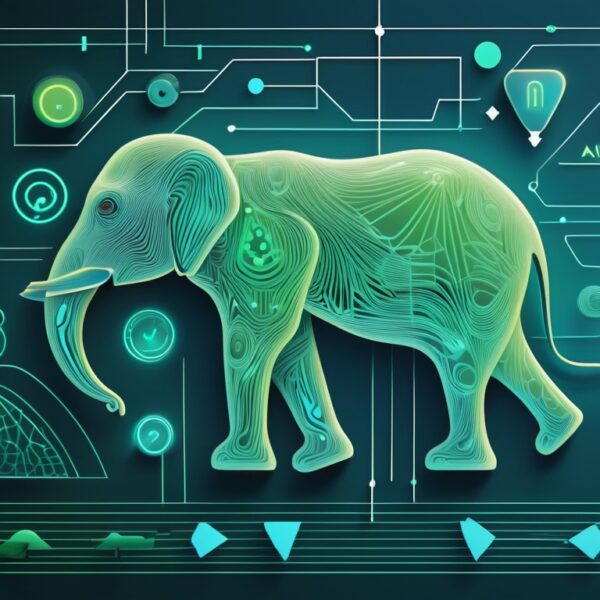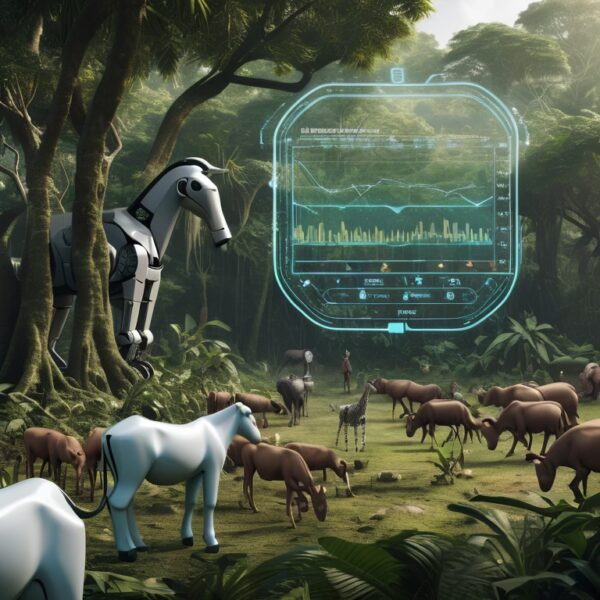Introduction to Decoding Animal Language
Artificial intelligence (AI) is venturing into uncharted territory: understanding how animals communicate. Long used to analyze human languages, AI and machine learning are now being applied to animal vocalizations, physical signals, and social cues. The goal? To decode animal language and open doors to conservation efforts and ecological insights that were previously unimaginable. With major advancements and organizations like the Earth Species Project (ESP) leading the charge, we may soon live in a world where interspecies communication is a reality.
Jump to Section:
What Is Animal Language?
Animal language refers to the sounds, gestures, and behaviors that animals use to communicate with each other. While humans have spent centuries trying to interpret these signals, AI’s vast data-processing ability is enabling breakthroughs by analyzing massive amounts of animal communication data. By uncovering patterns in these communications, AI is decoding animal language and shedding light on the social dynamics, needs, and environments of various species.

The Role of AI in Decoding Animal Language
1. Mapping Unique Vocal Signatures
One of the most significant breakthroughs in animal language decoding has been achieved through audio analysis. For example, in 2021, researchers used audio recordings to identify a new species of blue whales in the Indian Ocean. Each blue whale population produces a unique vocal signature, enabling scientists to distinguish between “acoustic populations.” This discovery not only highlights AI’s power to identify new species but also helps track these populations over time, aiding in conservation efforts.
2. The Earth Species Project’s Pattern Identification
The Earth Species Project (ESP), a non-profit based in California, uses AI to analyze vast datasets of animal communication. Led by CEO Katie Zacarian, ESP focuses on extracting patterns from large data sets that include audio, video, and physical behaviors of various animal species. With ESP’s research, scientists are rapidly moving toward understanding the core structures of animal communication. Zacarian believes that AI advancements may eventually allow two-way communication between humans and animals, potentially enabling interactions we never thought possible.
3. Deep Learning for Audio and Visual Signals
Deep learning, a subset of AI, has proven especially powerful in recognizing animal sounds and behaviors. By training deep learning algorithms on large datasets of animal audio recordings and video footage, researchers are beginning to distinguish subtle differences in animal calls, from bird songs to dolphin whistles. In some studies, AI has accurately classified these calls into categories associated with specific behaviors, such as mating calls or alerts for predators, which may be essential to understanding social and survival structures within animal groups.

4. AI-Driven Translation Models for Social Animals
Social animals like primates, elephants, and dolphins exhibit complex communication systems. AI-driven translation models, which are similar to those used for human language translation, are now being applied to animal social interactions. For instance, researchers are using these models to analyze the vocal patterns of dolphins. Preliminary results suggest that AI may be able to map these vocalizations to specific actions, emotions, or even “words,” potentially opening the door to understanding animal “vocabularies.”
5. Predicting Animal Behavior for Conservation Efforts
By decoding animal language, AI not only aids in understanding communication but also in predicting behavior. This is particularly valuable for conservation efforts, as scientists can forecast the movements, mating cycles, and social dynamics of endangered species. AI tools are now enabling conservationists to monitor real-time changes in animal behavior, informing protective measures and ensuring that endangered populations have the best chance for survival.
The Future of AI and Animal Language
As AI capabilities expand, the possibilities for decoding animal language grow more promising. Some researchers speculate that with advancements in natural language processing, AI may soon be able to recognize complex emotional states in animals, providing insights into how animals experience their environments. This could revolutionize how we protect and coexist with wildlife, bridging the gap between species and opening a new chapter in ecological preservation.
With AI, researchers hope to create models that can recognize and categorize thousands of animal signals. If successful, these models could even generate “translations” that allow us to understand and potentially respond to animal communication, ushering in an era of unprecedented interspecies connection.

Conclusion
AI’s potential to decode animal language represents a fascinating leap forward in our relationship with nature. By understanding the communication methods of animals, researchers are not only uncovering secrets of the natural world but also laying the groundwork for conservation and ecological balance. The next decade may bring extraordinary advances, allowing us to communicate, protect, and perhaps one day collaborate with other species in ways that seem like science fiction today.
Summary
- AI is helping scientists decode unique vocal signatures in animals, such as blue whale populations.
- Earth Species Project uses AI to identify patterns in animal communications, bringing us closer to two-way interspecies communication.
- Deep learning algorithms analyze subtle nuances in animal sounds and behaviors.
- AI-driven models are being applied to social animals, revealing potential “words” in their vocal patterns.
- Predictive AI tools are advancing conservation efforts by tracking animal behaviors and ecological impacts.
Research and Resources:
You may also like reading: How AI is Saving Lives by Early Cancer Detection

Read More: Language of Animals, How AI is Decoding it.
Similar Posts:
- Whole Grain Wonders: Healthy Foods for You and the Planet
 Switching to a whole grain diet not only revitalizes your health but also contributes to a healthier planet by using fewer … Read more
Switching to a whole grain diet not only revitalizes your health but also contributes to a healthier planet by using fewer … Read more - Rats with Backpacks: The New Heroes Against Smuggling
 Background Imagine a world where small, agile allies are employed to curb the illegal wildlife trade. In an unconventional twist, specially … Read more
Background Imagine a world where small, agile allies are employed to curb the illegal wildlife trade. In an unconventional twist, specially … Read more - Reasearch based top 6 tips on raising “Good Kids”
 Introduction Every parent’s dream is to raise children who are kind, responsible, and emotionally resilient. Harvard psychologists have examined what it … Read more
Introduction Every parent’s dream is to raise children who are kind, responsible, and emotionally resilient. Harvard psychologists have examined what it … Read more - Empowering Children with Dyslexia in Chennai: MDA
 Introduction In 1992, a compassionate group of parents, educators, and philanthropists came together to create the Madras Dyslexia Association (MDA). Their … Read more
Introduction In 1992, a compassionate group of parents, educators, and philanthropists came together to create the Madras Dyslexia Association (MDA). Their … Read more




